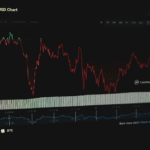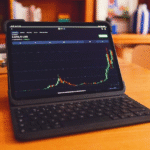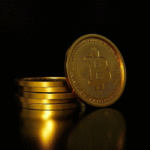 As the digital asset market matures, traders and investors increasingly turn to sophisticated financial instruments like options and futures to manage risk and optimize their positions. These derivatives, common in traditional financial markets, offer powerful tools for navigating the volatility and uncertainty that often characterize digital assets.
As the digital asset market matures, traders and investors increasingly turn to sophisticated financial instruments like options and futures to manage risk and optimize their positions. These derivatives, common in traditional financial markets, offer powerful tools for navigating the volatility and uncertainty that often characterize digital assets.
Understanding Options in Digital Assets
Options contracts provide the right, but not the obligation, to buy or sell a digital asset at a predetermined price before a specified expiration date. There are two main types of options: call options (which give the right to buy) and put options (which give the right to sell).
In the digital asset space, options are primarily used for hedging against adverse price movements or for speculative purposes. For example, if a trader holds a large amount of Bitcoin and is concerned about potential short-term price declines, they can purchase a put option. This option allows them to sell Bitcoin at a predetermined price, effectively setting a floor for potential losses. Conversely, traders might buy call options to profit from expected price increases, thereby leveraging their exposure to the asset without the need to purchase it outright.
Futures Contracts: A Tool for Strategic Positioning
Futures contracts obligate the buyer to purchase, and the seller to sell, a digital asset at a future date and price. Unlike options, futures contracts do not grant a choice; the transaction will occur as agreed when the contract was initiated.
Futures in the digital asset market are frequently employed to lock in prices for future transactions, thereby managing risk or taking advantage of anticipated market movements. For instance, a trader might enter a futures contract to buy Bitcoin in three months at a price they believe will be favorable compared to the market rate at that time. This strategy can be particularly useful for institutional investors seeking to stabilize costs in volatile markets.
In addition to risk management, futures allow for significant leverage, enabling traders to control a large position with a relatively small amount of capital. However, this leverage also increases the risk, as losses can exceed the initial investment, especially in the highly volatile crypto market.
The Role of Derivatives in Digital Asset Markets
Both options and futures have become integral to the digital asset ecosystem, offering traders tools to manage risk, speculate on price movements, and enhance their market exposure. Platforms like OKX and CME Group are leading the way in providing robust trading environments for these derivatives, with high liquidity, advanced security features, and a range of products tailored to both institutional and retail investors.
While these instruments offer substantial opportunities, they also carry significant risks, particularly due to the volatility inherent in digital assets. As such, they are best utilized by traders who have a deep understanding of the market and the specific characteristics of the digital assets they are trading.
Explore Digital Asset Opportunities with Kenson Investments
With Kenson Investments, shape your crypto journey through direct access to a diverse range of digital assets. From foundational assets like BTC and ETH to innovative alts and NFTs, Kenson Investments is your gateway to a tailored digital asset portfolio through our blockchain and digital asset consulting and digital asset investment solutions.
Connect with our team today and start your journey in the dynamic world of digital assets!














